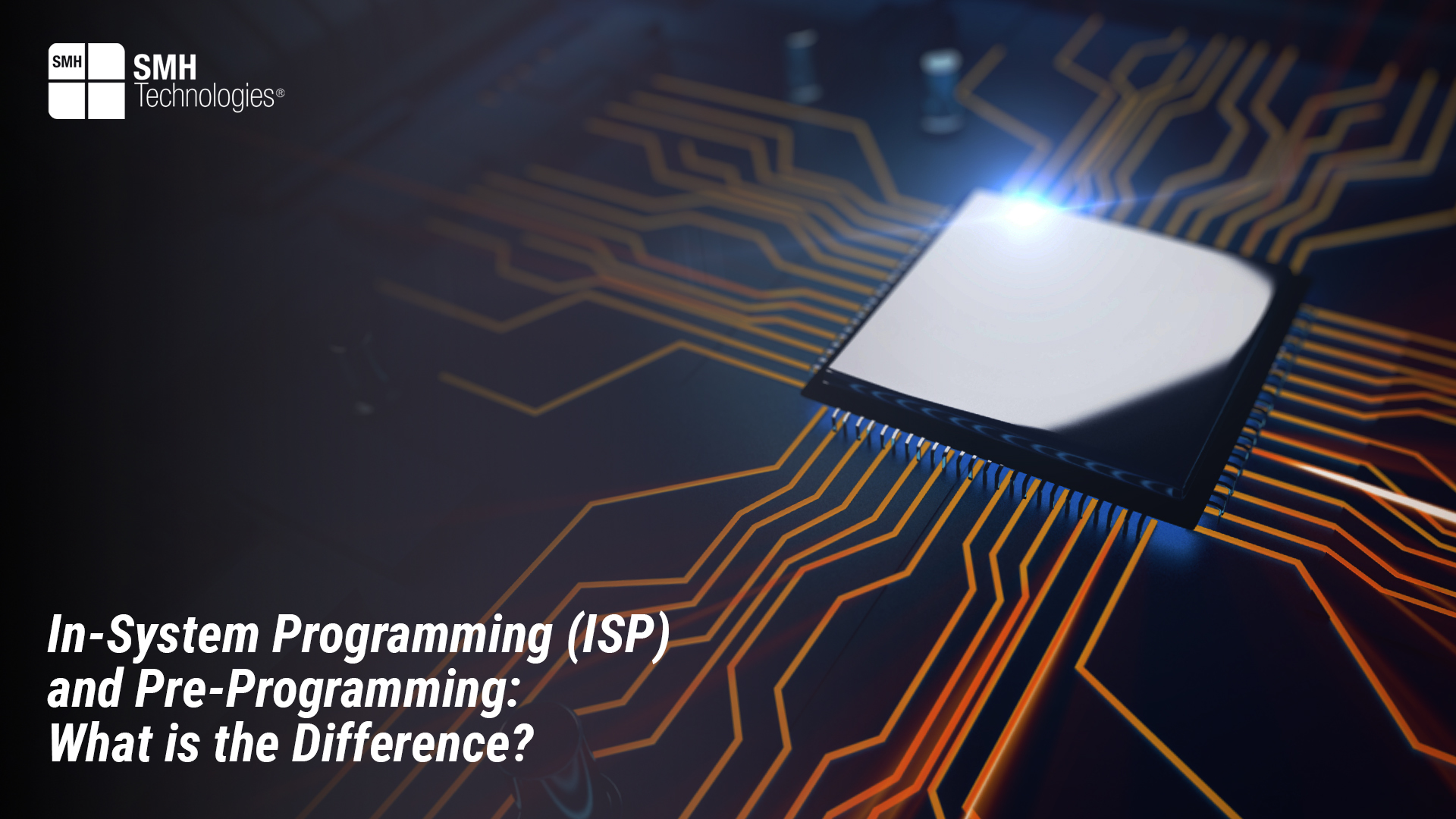Project Description
[This article is part of “Discover ISP”, the educational section of our Corporate Blog dedicated to those who are approaching the world of In-System Programming and Embedded Systems.]
Before delving into the differences between In-System Programming and Pre-Programming, it is important to understand what a microcontroller is and how it works. Microcontrollers are compact components driving innovation in Embedded Systems. Specifically, they are integrated circuits that manage specific operations within various devices. Their pivotal role in the technological ecosystem underpins the significance of efficient programming methods, such as ISP and Pre-Programming.
From vehicles to medical equipment, from home appliances to robotics, microcontrollers power countless applications. Packing a processor, memory, and I/O peripherals onto a single chip, microcontrollers act as simplified personal computers, tailored to control specific functions without the complexity of a full operating system. This unique blend of hardware in a singular unit makes the programming approach crucial for device functionality and performance.
How to Program a Microcontroller?
Programming a microcontroller involves loading instructions that enable it to process input and produce the desired output. Now the microcontroller is ready to execute them and bring the desired functionalities to life. The choice between ISP and Pre-Programming often hinges on factors like production scale, cost implications, and flexibility requirements.
This basic educational article aims to explain the main differences between In-System Programming (ISP) and Pre-Programming.
What is In-System Programming (ISP)?
In-System Programming (ISP) is a method of flashing or programming microcontrollers and other types of devices while they are already integrated into the target system or circuit board. ISP is hailed for its adaptability, allowing for firmware updates and modifications without removing the device from its environment.
This process typically takes place on the production line, often towards the end of the manufacturing process. In an ISP setup, the flashing process is usually performed just before the final functional test or on-site test. The integration of ISP within the production line exemplifies the convergence of manufacturing efficiency and technological innovation.
A major benefit of In-System Programming is the increased flexibility it brings to the production environment. With ISP, manufacturers have the ability to program devices directly on the assembly line, allowing them to respond more quickly to changes in programming requirements or last-minute updates. This flexibility streamlines the production process, reduces cycle times, and allows for more efficient management of programming tasks, ultimately leading to improved productivity and cost-effectiveness. ISP’s role in enhancing production agility and reducing time-to-market is unparalleled.
Dive deeper into ISP’s capabilities and benefits with two real examples. Click here to explore more: What is In-System Programming?
What is Pre-Programming?
On the other hand, pre-programming refers to the process of programming embedded devices with their software or firmware before they are assembled into the final product or system. This method offers a streamlined approach, particularly advantageous for high-volume productions where consistency and speed are paramount.
In this approach, each chip is programmed individually prior to integration. Software or firmware is loaded onto the device using specialized programming devices, such as microcontroller programmers, or during the production process via automated programming systems. The precision and reliability of pre-programming make it a favored strategy in scenarios demanding uniformity across numerous devices.
The main advantage of pre-programming is that the devices are supplied already programmed and ready for use, which can simplify the production process and reduce assembly time. Pre-programming is commonly used in mass production environments. It embodies a proactive approach to device readiness, ensuring that components are operationally viable from the outset.
Understanding the distinct advantages and operational contexts of ISP and Pre-Programming is crucial for engineers and manufacturers aiming to optimize their embedded system projects for efficiency, reliability, and scalability. This nuanced comprehension enables the selection of the most appropriate programming methodology, tailored to the specific needs and constraints of each project.



